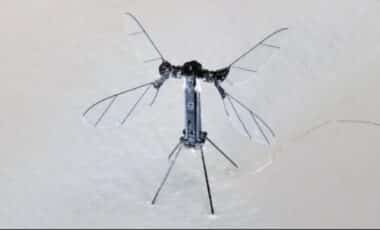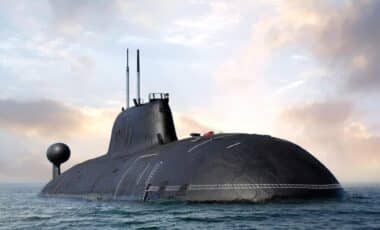Millions of Americans served in the armed forces during World War II. They have been called the Greatest Generation. The following is the story of one such man from that generation and his B-17 crewmates.
 Jack Flynn’s wartime story started like any other Sunday for a seventeen-year-old in December of 1941. However, this Sunday was December 7th. Jack, along with a group of his buddies, were playing basketball at St. Mary’s Star of the Sea school gym on City Island, Bronx, New York. Their basketball game stopped when a friend rushed into the gym, telling them the Japanese had attacked Pearl Harbor in Hawaii. The boys all went back to their homes to find their families. Their world forever changed that afternoon. War with Japan was declared the following day. On December 11th, just three days later, Germany declared war on the United States. Jack, like so many young men, would soon be fighting in the Pacific or Europe. Jack graduated in June 1942 from Cardinal Hayes High School. After graduation from high school, he worked for his father. He owned and operated a supply boat that provided fuel for the many ships that moored off City Island in the Long Island Sound.
Jack Flynn’s wartime story started like any other Sunday for a seventeen-year-old in December of 1941. However, this Sunday was December 7th. Jack, along with a group of his buddies, were playing basketball at St. Mary’s Star of the Sea school gym on City Island, Bronx, New York. Their basketball game stopped when a friend rushed into the gym, telling them the Japanese had attacked Pearl Harbor in Hawaii. The boys all went back to their homes to find their families. Their world forever changed that afternoon. War with Japan was declared the following day. On December 11th, just three days later, Germany declared war on the United States. Jack, like so many young men, would soon be fighting in the Pacific or Europe. Jack graduated in June 1942 from Cardinal Hayes High School. After graduation from high school, he worked for his father. He owned and operated a supply boat that provided fuel for the many ships that moored off City Island in the Long Island Sound.
Turning eighteen in August, he became draft-eligible. Knowing that he wanted to join the Army Air Forces, rather than being drafted. Jack and his good friend Wyatt Pick had, for some time, been talking about enlisting. On Wednesday, November 25th, 1943, the day before Thanksgiving, the two childhood friends walked into the Army Air Forces recruitment office in the Bronx and enlisted in the Army Air Forces. Thanksgiving that year was a day the Flynn family would never forget. Jack told his parents and family he enlisted, explaining that it was better to join. He was able to be in the Army Air Forces.
His father took the news the worse. Even though he was proud of his son and knew the cause was just, he had the memories of the horrors he had seen in World War l. The thought of his oldest son going to war was very difficult. Jack’s father Eugene Flynn, in 1917 at the age of twenty-four, volunteered for the American Field Service, providing medical care for the French Army. He would be wounded by machine-gun fire and injured in a German gas attack on a French position. For his heroism under fire, the French awarded Jack’s father, the Croix de Guerre, with a silver star.
Jack entered the Army Air Forces that December and immediately began training. Over the next nine months, Jack received extensive and specialized training in all areas of the operation of a B-17 bomber. During that time, he was promoted to the rank of Staff/Sergeant and selected to be a Flight Engineer / Top Turret Gunner on a B-17. As they neared the end of their training, the bomber crews’ pilot, Lt. Levine, was replaced by Lt. Raymond Buthe. Aircrews were tightknit groups, and a change just as training was ending and assignment to England could be devastating. Lt. Buthe could not have been a better fit. He was outgoing. Some said he was a “talker.” His transition into a crew that had been together for several months could not have gone better. Although only a few years older than the crew. He was considered the old man, married, and one child. They completed their final training in early October 1943 at Drew Field, which is now Tampa International Airport in Tampa, Florida.
 Aircraft # 43-38725: This photograph of their B-17 was taken by a friend of Jack Flynn on a bombing mission
Aircraft # 43-38725: This photograph of their B-17 was taken by a friend of Jack Flynn on a bombing mission
They were ordered to Hunter Army Airfield near Savannah, Georgia. The ten-man crew led by pilot Lt. Raymond Buthe, co-piloted by Lt. Charles Norris, left Hunter Army Airfield near Savannah, Georgia, on October 17th, 1943. They were ferrying a new B-17 loaded with spare parts and headed for England. Their flight route took them near New York City. Lt. Buthe said to the crew, “Let’s go take a look at the Statue of Liberty.” They all told him they would get shot down. Lt. Buthe went ahead and circled the Statue of Liberty, and to Jacks’s excitement flew over his home on City Island. Jack said jokingly to Lt. Buthe, “Oh boy, can I jump out?” We can only guess at Lt. Buthe’s response to Jacks’s request. From there, they made one stop at Grenier Field, New Hampshire, for fuel. Their next stop was Iceland, where they would spend the night getting some badly needed rest and fuel for their bomber. Leaving the next day, they flew to an airfield at Valley, Wales. From there, another crew would fly their B-17 to the Army Air Forces base in Burton Wood, England, for modifications. From Valley, Wales, they traveled by train to an Army Air Forces base for incoming aircrews in Stone England. Here they spent a few days awaiting assignment to a permanent base. They received orders on October 24th to report to Rattlesden Army Air Forces Base. There they would join the Eighth Air Forces 708th Bomber Squadron which, was part of the 447th Bomb Group.
Between their arrival and their first actual combat mission as a crew, they needed to complete a concentrated ground school introducing them to Eighth Air Forces and air combat against Germany. It ensured aircrews learned everything they would need to be ready before actual air combat. No one could fly until they completed the training.
Aircrews also had to complete practice missions. The crew, like other aircrews, developed a strong bond, in many ways, they were closer to each other than their own families. There was a closeness unique to the Army Air Forces between the officers and the enlisted men. They knew everything about each other and knew they could depend on the other guy.
 The crew on a bus out to their B-17 during training at Drew Airfield in Tampa, Florida.
The crew on a bus out to their B-17 during training at Drew Airfield in Tampa, Florida.
On November 21st, they were all woken up at 3 am. The crew got the word they were going on their first combat bombing mission. Their training was over; this time in the air, they would be together as a crew. Each man knew they needed the other if they were going to make it. The other planes in their bomber formation would be depending on this young and inexperienced crew. They had enough time to get dressed, go to the mess hall for breakfast, Jack, a Catholic, would receive communion and a blessing from a priest before the mission briefing. Even non-Catholics would seek a blessing of forgiveness for all their sins from a priest. After the mission briefing, the crew drove together out to their plane. Once they took off, each bomber would circle until all aircraft were in the air. That could take anywhere from one to two hours, sometimes longer depending on the number of bombers going on the mission. When all planes were in formation, the lead pilot would say “go,” and the bombing mission was underway. Their target that day was the oil refinery and marshaling yard in the German city of Koblenz located approximately 200 miles from the Belgium border. The young crew managed to get through both the German fighters and heavy flak to drop their bombs on the target and make it back safely to England.
The next mission was on November 26th, with the target being the railroad marshaling yards in Hamm, Germany, located northeast from Cologne. This time they made it back to their base at Rattlesden a lot more aware of the danger to their job. In a letter to his family after their second mission, Lt. Curtis Chapman, the bombardier wrote he felt like a veteran now. He also wrote of their bombing mission the squadron had been shot up considerably, but he and the crew returned home safely.
Their last bombing mission was November 30th. This began as the ones before, up at 3 am, the mess hall for breakfast, church, briefing, take-off, and into formation. Their target that day was the Lutzkendorf Oil Refinery near Merseburg, Germany.
However, they would be one crewman short that morning when they found out their waist gunner Sgt. Douglas Aldrich would be flying with another crew. That would be a blessing for Sgt. Aldrich, who would go onto finish the war and return home.
The flight across the English Channel and France was uneventful. That changed as they neared their target, German anti-aircraft became intense. All bombers had to maintain their positions as they were minutes from the bomb drop. At approximately 1318hrs, only one minute from the Lutzkendorf oil refinery, Jack, in his top turret position, was horrified when he saw the tail section explode.
Sgt. John Lafferty, the waist gunner, later reported that they had been receiving flak and set afire. Fortunately, he had one side of his parachute fastened. There was another explosion that blew him out of his gun opening. Jack believed the tail section had completely blown off, killing Sgt. Ralph Corning the tail gunner immediately. Sgt. Anthony Demarco, the radio operator who at the time was acting as a waist gunner and the ball turret gunner Sgt. Charles Agantovich both died at the same time the tail section was struck. The Forces of the tail section exploding knocked Jack out of the top turret, he landed behind the pilot Lt. Raymond Buthe and co-pilot Lt. Charles Norris. Since the top turret was too small to wear a parachute, Jack wasn’t wearing his. Miraculously he landed on top of his chest parachute and was able to hook one strap. The plane then started to turn almost entirely upside down into a downward spiral. Jack looked up and saw Lt Buthe and his co-pilot, Lt. Charles Norris, struggling frantically to get out of their seats. Still, with the plane in a downward spin, the centrifugal Forces held them in their places, making it impossible for them to free themselves. Suddenly the plane was ripped by another explosion, this one blew Jack through the opening leading into the bomb bay and out through the open bomb bay doors. The fact the bombs were still in place only left a small opening for him to fit through, making his escape even more miraculous. Jack would later write, “Don’t tell me there is no God.”
As he headed downward, he was able to pull the ripcord on his parachute. To his horror, the chute did not fully deploy. With only the one strap hooked on, he was spinning and making things worse when he looked, up he could see falling pieces of plane debris. With only one strap on and falling debris, he thought he was not going to make it. As he headed downward, he continued to look up watching as debris fell, but his main concern was his crewmates. Was he the only one to escape? Finally, he saw two parachutes and knew at least two of his crewmates had made it out.
With his chute not fully opening, his descent was fast, and his landing hard. Jack was knocked unconscious for a short time. When he came to, he began to hide his parachute when a shot rang out over his head. Jack looked to where the sound of the gunshot had come from and saw a group of German soldiers with their rifles out running towards him. He knew that his only option was to surrender. The soldiers grabbed him and brought back to a vehicle where they kept him under guard.
As he stood next to the truck, he noticed other German soldiers heading towards him with two American fliers. It was Sgt. Lafferty and Lt. Chapman. Jack learned from Lt. Chapman that he had been in the nose, preparing to drop the bombs when there was an explosion. Lt. Marvin Brawer, the navigator who sat only a few feet away from him, was killed. Lt. Chapman knocked unconscious but fortunately came to and found himself in a free fall from the plane. He had just enough time to pull the ripcord of his parachute. Like Jack and John Lafferty, he was caught by German soldiers as he was attempting to bury his parachute. They were all captured near the German town of Zeitz. The Germans put them in the back of one of their vehicles. As they drove, they passed through a city still on fire from the bombing. A German soldier sitting in front of them turned around and spit on the three. They immediately knew the Germans hated them.
 Sgt. John Lafferty Jr.
Sgt. John Lafferty Jr.
The three were transported to Frankfort arriving the next morning around 8 am. From there, they were then taken by train to Oberursel and held at Dulag Luft (Durchgangslager der Luftwaffe), a transit camp for captured members of the Army Air Forces. The primary purpose here was to be a collection and interrogation center for newly captured aircrews before being transferred in groups to permanent Prisoner of War camps. The three were separated when they arrived. After being photographed and fingerprinted, Jack was taken and put into a windowless cell.
He would spend the next ten days in solitary confinement. Jack described those ten days as horrendous. He said, “you start to go out of your mind.” The Germans would do things to him, such as, at midnight, turn on the cell lights, and three soldiers would come in and make him get up and stand. He said this was to exhaust him and make any interrogation go easier for them. The Germans would not take him to the bathroom, so in his cell, all he had was a bottle to use. His German capturers gave him very little water, and when his thirst became unbearable, he had no choice, he had to drink his urine to survive. During those ten days of confinement, the only food he received was bread.
Jack was the type of man that would never say anything about being abused by the German’s for information. However, since the end of the war, numerous POW’s have come forward to tell about the physical abuse they suffered during interrogations by the Germans.
After his tenth day of being held at Dulag Luft, Jack, along with a small group of other Americans, was taken to the Dulag Luft near Westlar. Here Jack was able to locate Lt. Chapman and Sgt. Lafferty. The three crewmates were all that was left from a crew of nine. They weren’t together long before they were each transported to a different Prisoner of War (POW) camps.
That would be the very last time the three sole survivors would ever see each other. Lt. Chapman went to Stalag Luft I, while Sgt. Lafferty to Stalag Luft III and Jack was transported by train to Stalag Luft IV near Gross Tyschow in eastern Germany in what today is Poland. This prisoner-of-war camp held over 8,000 American airmen along with several hundred prisoners from other countries. It was overcrowded, barracks were in poor condition, little if any heat, inadequate food, clothing, and medical supplies. An International Red Cross report from October 1944 described the camp conditions as generally bad. Jack arrived at the camp in mid-December. At age nineteen, Jack would find himself away from his family for the first time at Christmas. His future was uncertain, would he live to see the end of the war, would he come home to marry his fiancé? Jack, after the war, would attribute his survival to his faith in God and his desire to get back to fiancé and his family.
The Russians were advancing from the east, and by early February were only 40 miles away from the camp. With the Russians advancing, the Germans decided to abandon Stalag Luft IV. The sick, injured, and disabled prisoners were transported by train to prison camps in western Germany. Prisoners such as Jack considered fit to march left the prison camp, on February 6th, 1945, on what later would be called the “Death March.” They had the clothes on their backs, and a Red Cross food box. Their German captors said the walk would last only three days, the march would eventually cover over 600 miles and last 86 days, in some of the worst weather seen in years. About the 86 days, he later would write, “if we were fortunate, we spent a night in a barn giving us shelter from the cold, snow or rain.” But most nights, they had no shelter at all and were forced to sleep on the ground. Jack contracted dysentery, diarrhea, along with trench foot, as did most of his comrades. Since no medication was available, Jack, like his buddies, ate charcoal from the bonfires they had the night before to battle dysentery and diarrhea.
Those prisoners unable to walk for themselves or too ill to go for food were helped by those prisoners who were healthy enough to help care for them. Food was minimal, mostly potatoes or a vegetable. Malnutrition was the norm. Jack, who was thin, to begin with, was extremely fortunate to survive. Exhaustion, exposure, and other illnesses took their toll on the prisoners. The fates of those who fell behind were in the hands of their German guards.
At one point, the prisoners were placed into boxcars, ninety men per car. All of the men had to stand, except for the seriously ill. There was no water and only one small hole in the floor to use as their toilet. Prisoners believed their German captors were using them as targets for allied fighters. In fact, during the approximately 30-mile journey, the train did come under attack from allied fighter planes with several of the boxcars hit, leaving an unknown amount of prisoner’s dead. After the attack, the prisoners knew they were being used as targets.
For Jack and the surviving members of the “DEATH MARCH” the nightmare would come to an end on May 2nd, 1945, near Lübeck, Germany. Their German captors fled the day before. The group sat exhausted and ill, waiting, not knowing what was next for them. Off in the distance, the sounds of military vehicles could be heard, to Jack, and the rest of the pow’s joy it was British and Canadian soldiers. Like most pow’s, Jack was paper-thin, exhausted, and ill.
The sight of the Brits and Canadians made him realize that his nightmare was over; he knew he would be going home. The liberated airmen were treated by British medical services, able to shower, receive clean British uniforms, eat, and finally sleep on real beds. On May 8th, Jack and a large group of former pow’s were transported to Brussels, Belgium. From there, they traveled by train to Camp Lucky Strike northeast of Le Havre, France, where they were processed and waited for a liberty ship to return to the states.
Jack, like so many veterans, came home from World War II, buried the memories of the horrors he suffered, he witnessed, the friends lost, and the pain he endured. He had a life to start living again. He married the love of his life, Dolores McGrail. Together they had four children. Jack went to work for the New York Police Departments Emergency Services Unit in the Bronx. Talk of the war was rare. Although over the years, bits and pieces of his story would slip out of him. It was only later in his life when his children sat down and spoke with him about his wartime years; they found out about his miraculous story of survival.
Even though six decades had passed since the war ended, three words he spoke during his 2005 interview with his children said it all, “You never forget.” Jack joined his crewmates in 2009.
Like Jack Flynn, Lt. Curtis Chapman returned home, married, and would raise a family. Sadly, he passed away in July 1963 at the age of 43. Sgt. John W. Lafferty Jr. would return home as well, marry and raise three children. He passed away in 1995.
The Germans recovered the remains of Lt. Buthe, Lt. Norris, Sgt. Corning and Sgt. DeMarco shortly after the crash. They were buried by the German military in the Michaelis Cemetery in Zeitz on December 2nd, 1944. They were later disinterred and reburied at Henri-Chapelle American Cemetery in Hombourg, Belgium. The bodies of Lt. Brawer and Sgt. Agantovich were recovered later and transported to the American Military Cemetery Ardennes. After the war, the military notified the families of the six fallen airmen of the recovery of their remains.
This story is more than about one man. It could be written about thousands of more American military servicemen. Their generation is leaving us daily, and soon there will be none of them remaining to tell their stories. That’s why we must preserve and pass onto current and future generations of Americans, the accounts of Jack Flynn and his comrades. Young people need to know of the sacrifices of the men and women of that generation. The freedoms they enjoy today were paid for by the Greatest Generation.

This picture was taken after they completed training as a crew in Tampa, Florida
Standing: S/Sgt. Jack Flynn, Sgt. Doug Aldrich (Waist Gunner), Sgt. Charles Agantovich
(Ball Turret), Sgt. Anthony DeMarco (Radio Operator),
Sgt. John Lafferty Jr. (Waist Gunner), Sgt. Ralph Corning (Tail Gunner)
Kneeling: Lt. Charles Norris (Co-Pilot) Lt. Raymond Buthe (Pilot) Lt. Curtis Chapman (Bombardier)
Lt. Marvin Brawer (Navigator)

Sgt. Charles Agantovich, Sgt. Ralph Corning and Sgt. Jack Flynn taken some time before completion of their training.

Standing R to L: Jack Flynn, Charles Agantovich, John Lafferty Jr.
Sitting R to L: Ralph Corning and Anthony De Marco

Sgt. Charles Agantovich

S/Sgt. Jack Flynn with Lt. Buthe and Lt. Brawer in the background with parachutes.

Lt. Levine (Pilot) Lt. Norris (Co-Pilot) during training. Lt. Levine was the crews’ original pilot but transferred before the completion of training.

Sgt. Anthony De Marco

Lt. Raymond Buthe and Lt. Curtis Chapman

Lt. Charles Norris and Lt. Curtis Chapman


Dolores “McGrail” Flynn S/Sgt. Jack Flynn


EUGENE FLYNN Croix de Guerre, with a silver star

EUGENE FLYNN’S AMBULANCE








